The Ultimate Middle East Travel Guide
While you may not see the Hanging Gardens of Babylon when you visit the Middle East anymore, there is so much to discover! Read our ultimate Middle East travel guide.
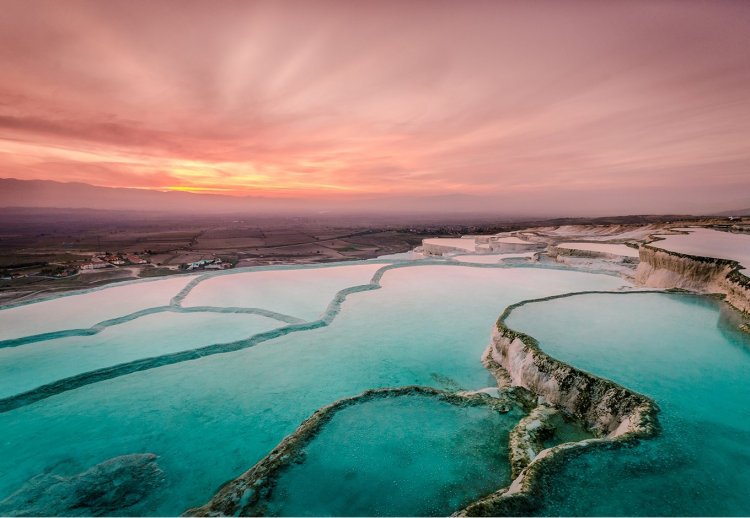
Being the bridge connecting continents of Asia, Africa, and Europe, the Middle East is also a site of the world’s earliest civilization, the birthplace of some of the world’s most influential religions, and has a history of some of the greatest empires. The Ottoman Empire in Turkey, the Persian Empire in modern-day Iran, Egypt and Turkey, and the earlier Babylonia and Mesopotamia, have all put a footprint in contemporary Middle East culture and art and expanded its reach to both West and East. Moreover, the natural beauty of Rub’ al Khali (Empty Quarter), and its startling contrast with the Red Sea, and fertile regions of Nile, the River Jordan, and the Tigris-Euphrates river basin provide a great nature escape.
While you may not see the Hanging Gardens of Babylon when you visit the Middle East anymore, there is the Ancient City of Petra in Jordan, and many more wonderful places to visit, and experiences to dive into.
Note: Make sure to double-check COVID 19 precautions, protocols, and operating hours before you visit any of these sites, aside from checking the areas with a high risk of yellow fever transmission.
Quick facts about the Middle East
Largest Country: Saudi Arabia
Smallest Country: Bahrain
Largest City: Ankara (Turkey)
Smallest City: Manama (Bahrain)
Number Of Countries: 18
Highest Point: Damavand (Iran)
Population: 411 million
Total Area: 2.783 million mi²
UNESCO Heritage Sites: 9
Top Reasons to Travel to the Middle East
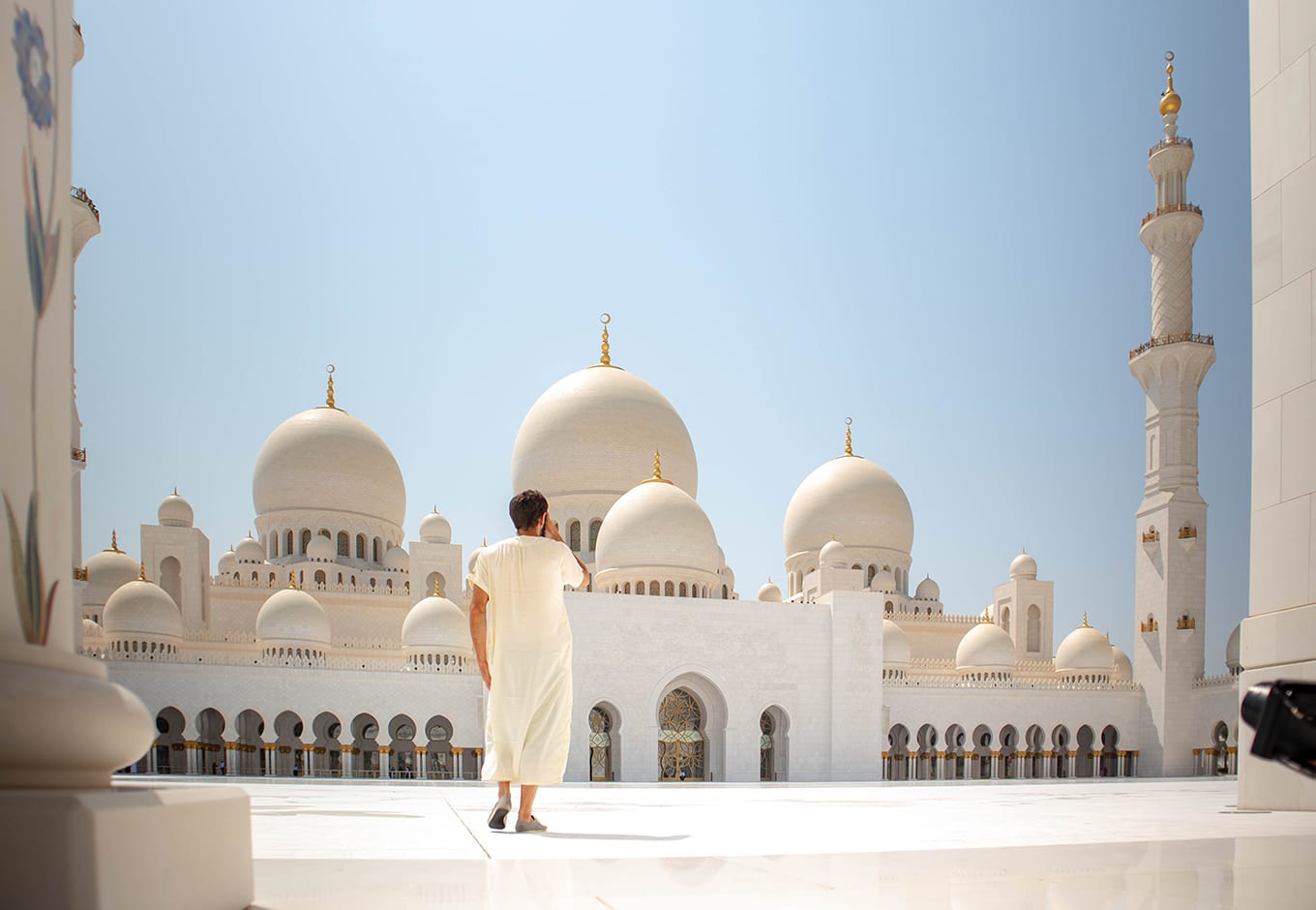
The Continent is the Mix of Cultures
Since ancient times, the Middle East has attracted migrating peoples. Today, the main ethnic groups are Arabs, Turks, and Iranians, speaking, respectively, Arabian, Turkish, and Persian. As much as the language, religion forms the basic cultural identity. Islam is predominant, but Judaism, the faith of ancient Israel, is also the religion of the modern state of Israel.
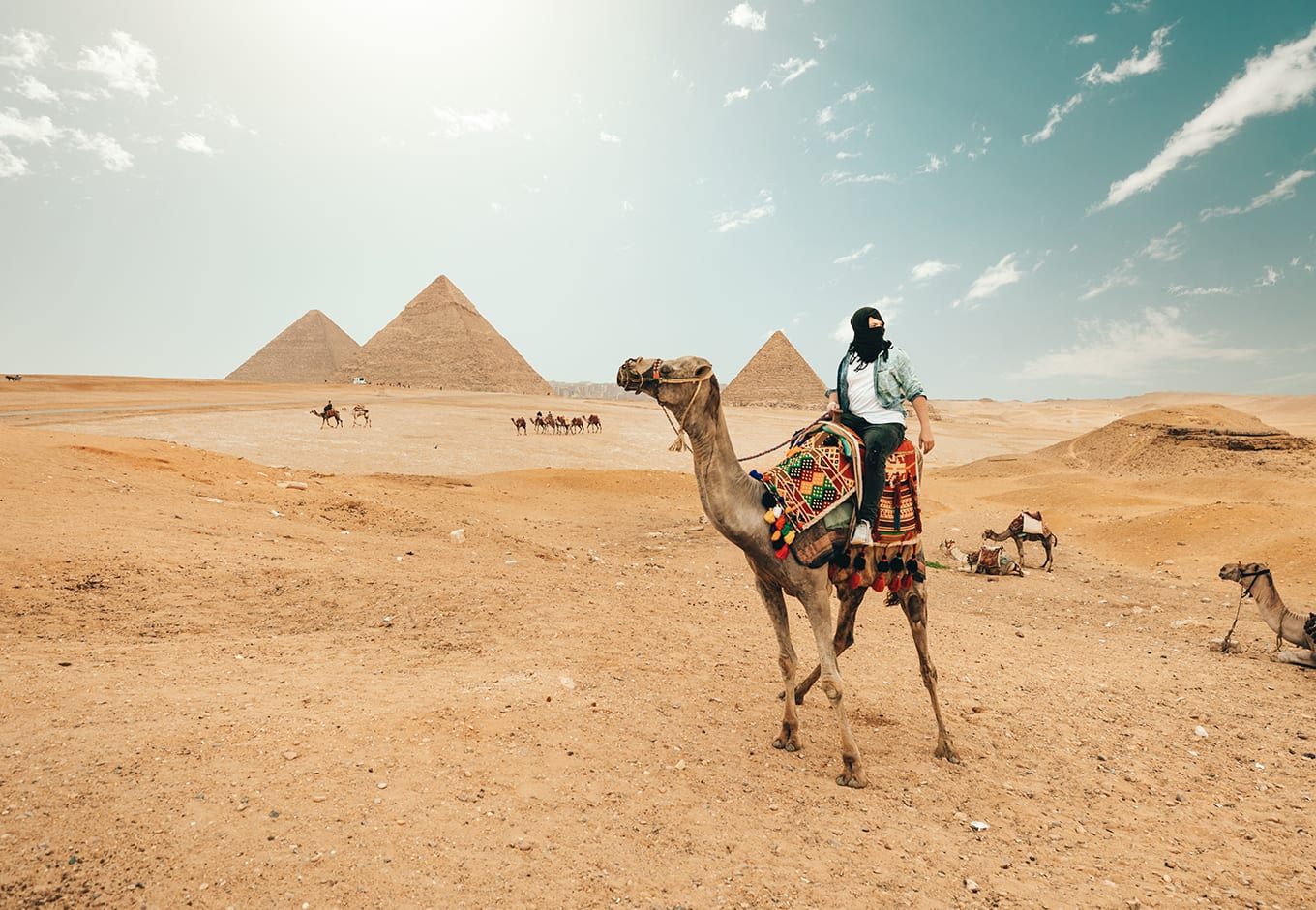
It’s Highly Affordable and Easy to Visit
Traveling to the Middle East does not require either excessive planning, or a large budget, compared to Europe.
Although the costs of travel in the Middle East vary wildly, there are many budget hotels to choose from, and hostel culture is booming, too. Tips for saving? You can find meals of local cuisine, such as falafel or shawarma in most Middle Eastern countries, for under $2, whereas the price of a meal in a restaurant with a Western-style menu is higher.
Regarding visas to the Middle East, the difficulty of obtaining a visa varies country by country, just as travel restrictions – while Israel does not require visas for Western citizens, Jordan, the United Arab Emirates, Egypt offer visas on arrival, and Turkey’s e-visa process has to be completed before traveling.
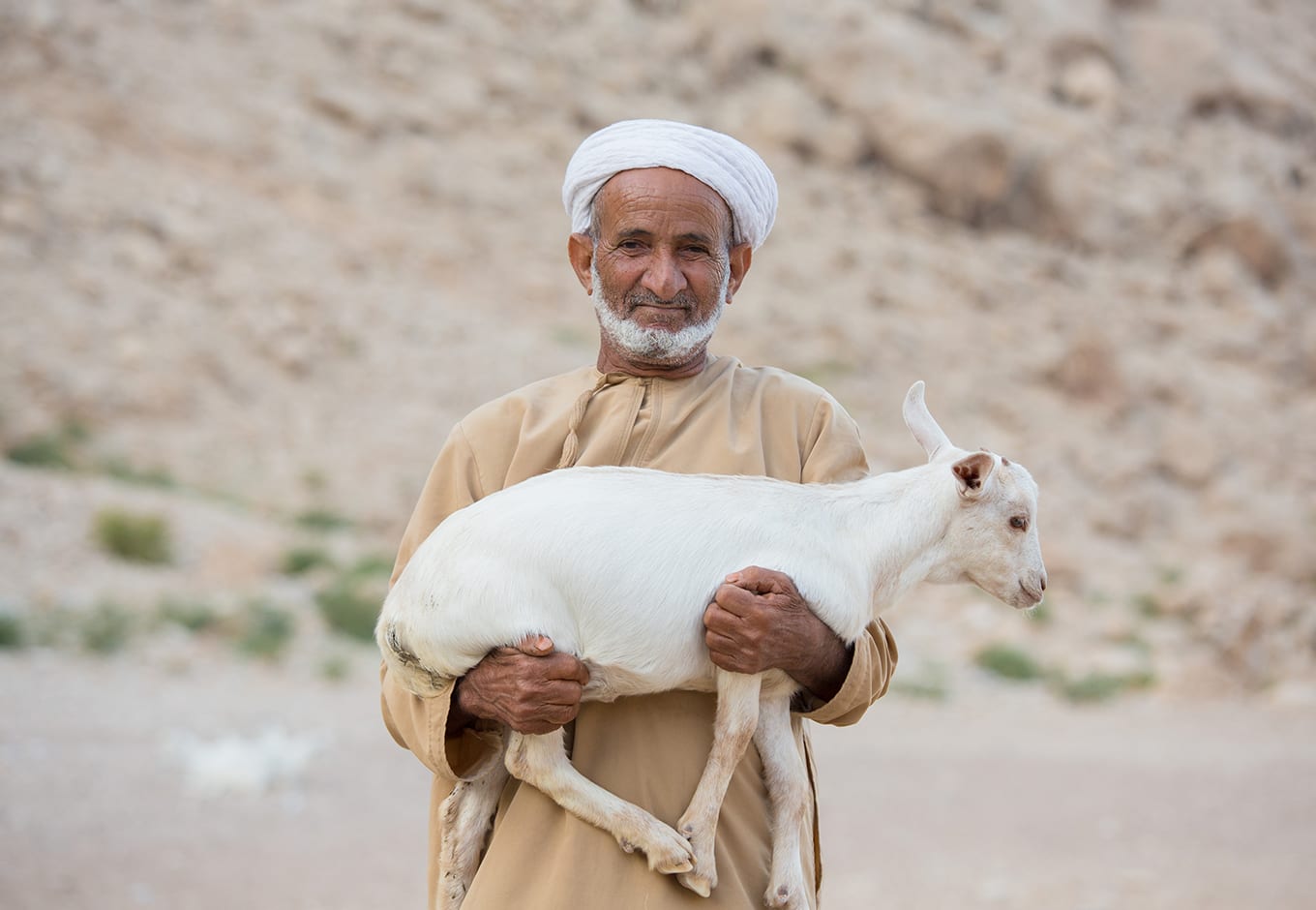
It’s the Perfect Place to Learn about Traditional Lifestyle
While the nomadic Bedouin lifestyle may spring to mind when thinking about the authentic, or the traditional way of life in the Middle East, it is not the case. Less than 10% of the region ever followed a nomadic lifestyle, and if you wish to experience the more traditional way of living, head to villages and countryside — early civilization in the Middle East was centered in agriculture, as Fertile Crescent, and as much as half of cereal and legume crops have their origins here, including wheat, barley, oats, rye, peas, beans, and fruit trees. It is also in the Middle East where sheep and goats were domesticated first.
Not only its economic system is traditional; the way of organizing society is also distinct and will provide you food for thought for your own daily life.
To experience the authentic traditional way of life in the Middle East, where farming is still a major sector, book a tour to villages with mud-floored homes built on mud bricks. Here, families live together by tradition, still largely untouched by rapidly changing cityscapes and the culture in more urbanized areas.
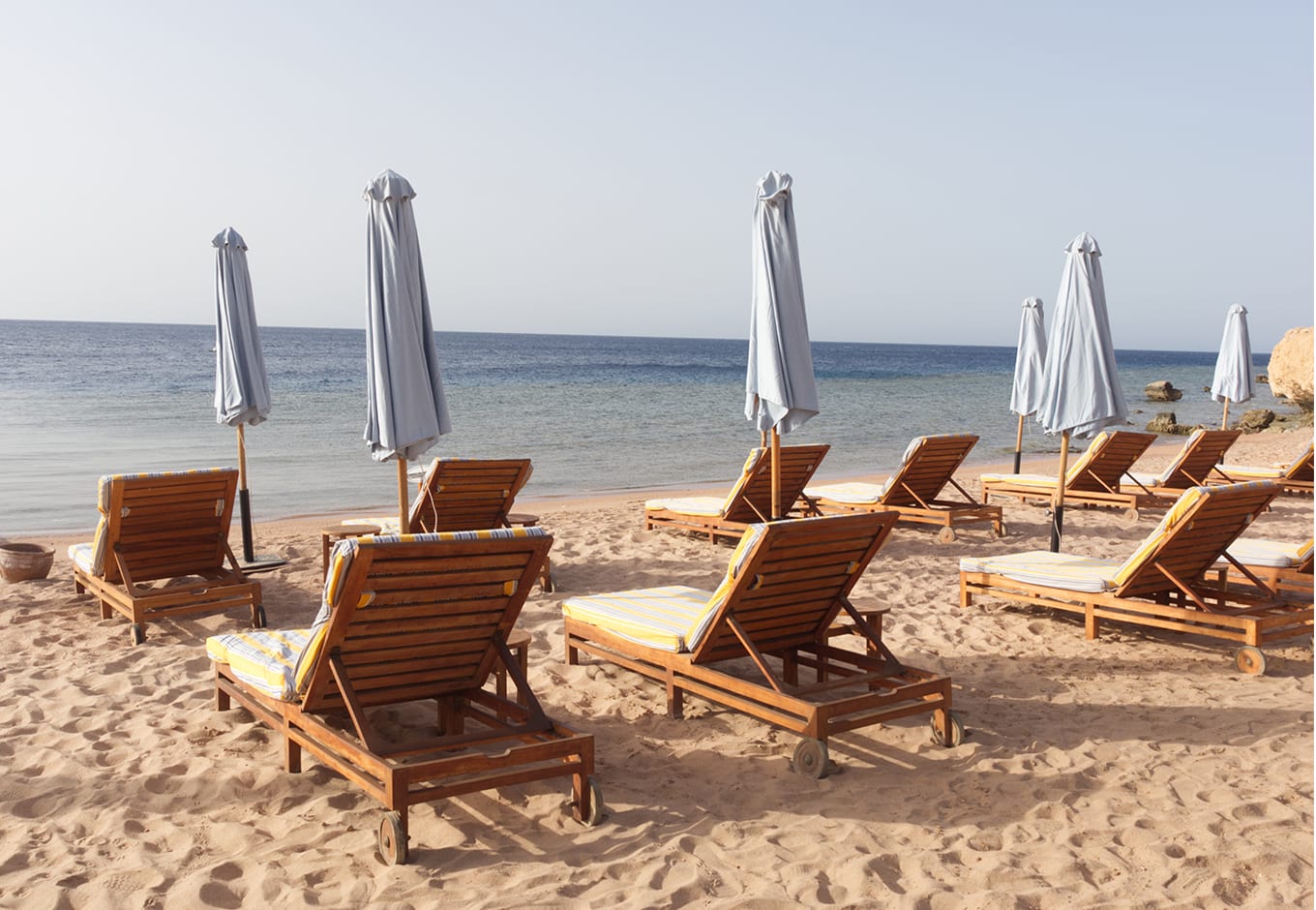
Best Time to Travel to the Middle East
The Middle Eastern climate is well known for its hot and dry desert climate, so the summers are best avoided. Spring in the Middle East (March to May) is considered the best time to visit, as you can enjoy the warmth and blooming wildflowers, and see the full spectrum of color around provided by hydrated foliage. Just as is spring, also fall is good to see the migration of Berbers in Morocco in September and avoid the summer heat. Beware that the shoulder season in some regions is much shorter. For example, temperatures in Dubai only drop to at the end of October. Winter (December to January) is great if you want not only to go sightseeing but also go sunbathing and scuba diving. Typically, winter is less crowded, so you may have a better sight of the destinations, but the prices go up during Christmas and New Year holidays.
Middle East Travel Guide: The Top Destinations
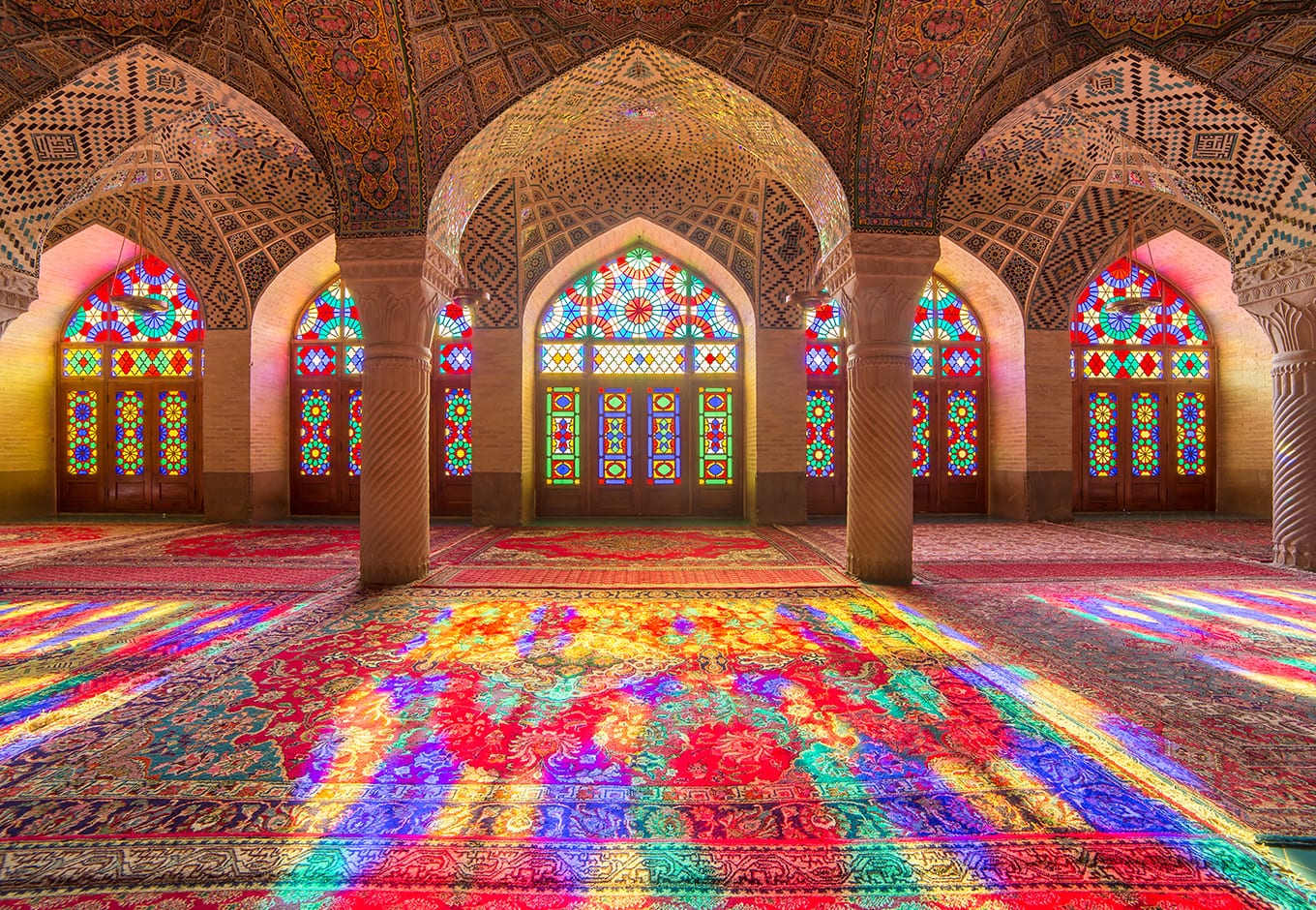
Iran
Mosques, such as Shah Cheragh, and Nasir al-Mulk in Shariz are truly spectacular religious buildings to see by themselves. Moreover, historical castles, as Alamut Castle, or culturally distinct places, such as Zoroastrian Towers of Silence in Yazd where the dead were sent for decontamination before going to the final resting place, offer interesting and educational first-hand insights into the history of the heavily religion-influenced culture, which is debated and at times wrongly portrayed in media today.
If you only spend a couple of days in Iran, make sure you take time to see the country in full and do not get carried away with Tehran, although its contrasts of crowded bazaars, bedazzled palaces, and calm relaxing parks request a day or two. But to truly get to know Iran, paying a visit to Qom is a must. The second holiest city in Iran, it features a shrine – the second most holy place in Iran, and great mosques. Make sure you sit down and enjoy some bastani sonnati, saffron ice cream, in Akbar Mashti Ice Cream shop, after filling up with the zereshk polow (chicken and rice with barberries)also known as “jeweled rice” and commonly sold by street vendors. For a true Iranian food experience, try also mast-o-khiar, a side dish of yoghurt sauce with cucumbers.
To catch the glimpse of Iran’s largest festivals, visiting Iran during Nowruz (“new day” in Persian), is the Iranian New Year, which starts on March 20, and is celebrated with jumping over bonfires and lighting off fireworks. It celebrates the arrival of spring, the rebirth of nature, and has a lot to do with green foods and freshness.
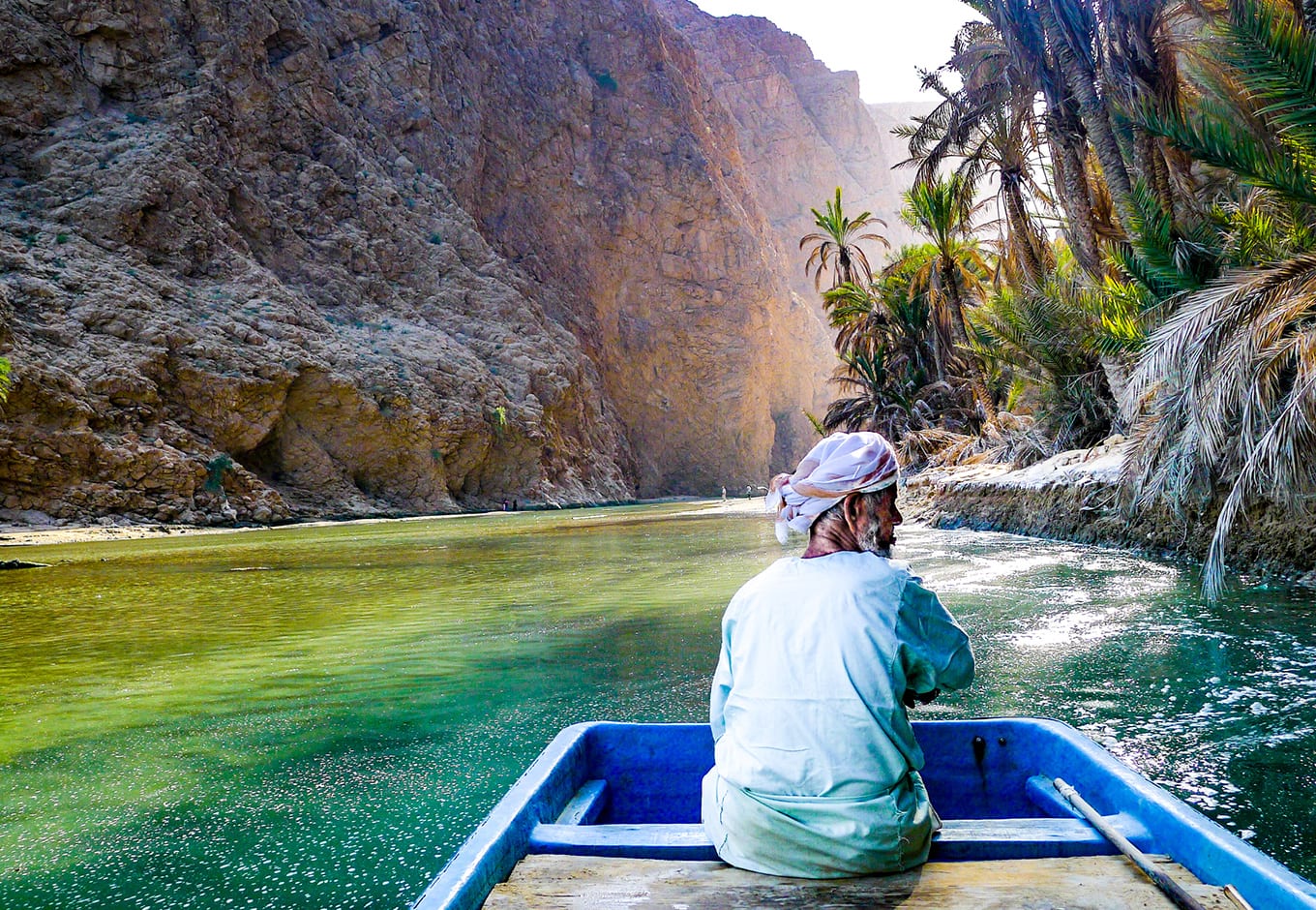
Oman
Have you added Oman to your bucket list yet? Beautiful nature, as Musandam beaches with the white sand beaches encircling the Gulf of Oman and the Arabian Gulf, is only part of the equation — the unique heritage of forts and castles in Oman include such architectural pieces, as Nakhal Fort, Nizwa Fort, and Jibreen. For those into hiking, Jebel Akhdar (Green Mountain) has several hiking trails and farming villages, but outdoor activities do not stop there; Majlis Al Jinn, the second-largest cave chamber in the world, is another great destination for travelers looking for climbing and hiking adventures.
If you only have a couple of days to spend in Oman, start in Muscat. After visiting the port area of Mutrah, and the Sultan Qaboos Grand Mosque near the airport and swimming in the Bimmah Sinkhole, head to Sur to see the turtle reserve and take a refreshing bath in Ras al-Hadd beach, before camping under the stars of the Wahiba Sands, known as Empty Quarter. Before heading out of the city to relax in the desert, try shuwa, lamb wrapped in banana leaves and cooked in an underground pit for at least a day. Halwa and fried, meat-stuffed pastries sambusa make an excellent traditional road trip snack to take with you. Try some sambusas at the snack shop of Muscat’s Old Muttrah Souk near the coastline.
To get the most out of your trip to Oman, plan your itinerary around the Masqat Festival. Masqat (Muscat) is the largest city and is a great destination by itself, but during the month-long festival between January and February, theatre performances, acrobatic events, circuses, camel races uncover the culture and historical heritage of Omani people.
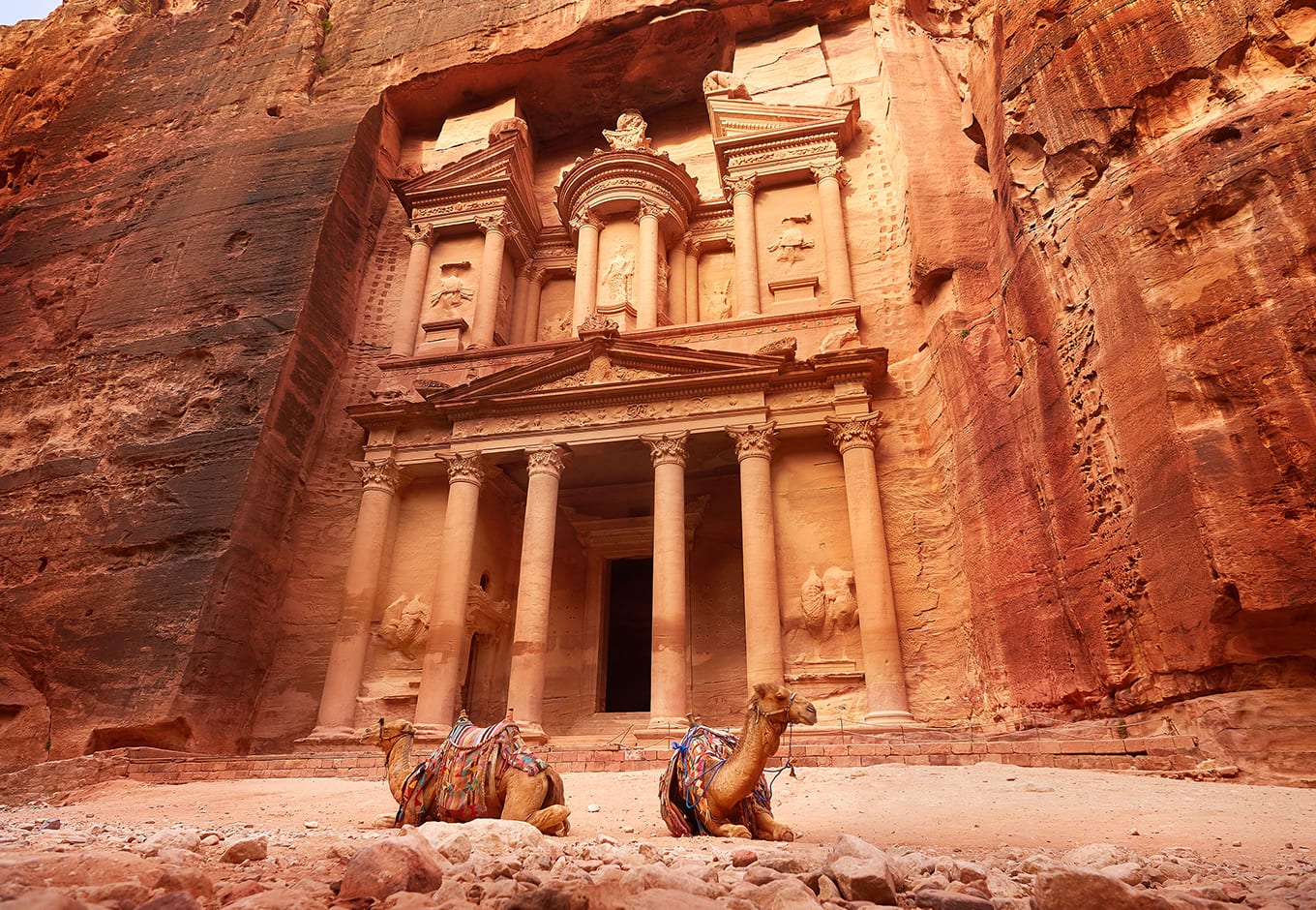
Jordan
One should plan the Jordan travel bucket list not only around the Ancient City of Petra, as the country is also home to Roman ruins in Jerash dating back to the Bronze Age with an incredibly well preserved Oval Forum and ancient theatre.
Are you into hiking? The newly launched Jordan trail might be just for you. Offering a more active take on visiting Jordan, it connects the length of Jordan (400 mi) from Um Qais in the north to Aqaba in the south, it is a series of trails, offering 40 days of hiking through villages and towns. A great way to discover Jordan’s culture is to try the traditional labneh, a traditional strained yogurt, served alongside flatbread and garnished with chopped mint. If you get a chance, ordering Mansaf, a meat dish offered to guests, and eaten communally, is an experience on its own. Goat meat would signify the most value, appreciation, and respect, and thus traditionally, the dish was a significant part of the ceremony when resolving conflicts between the tribes and families.
To experience the modern-day Jordan with its natural beauty, you can plan your itinerary around the Wadi Rum festival in December, a unique techno festival taking place at a UNESCO world heritage site.
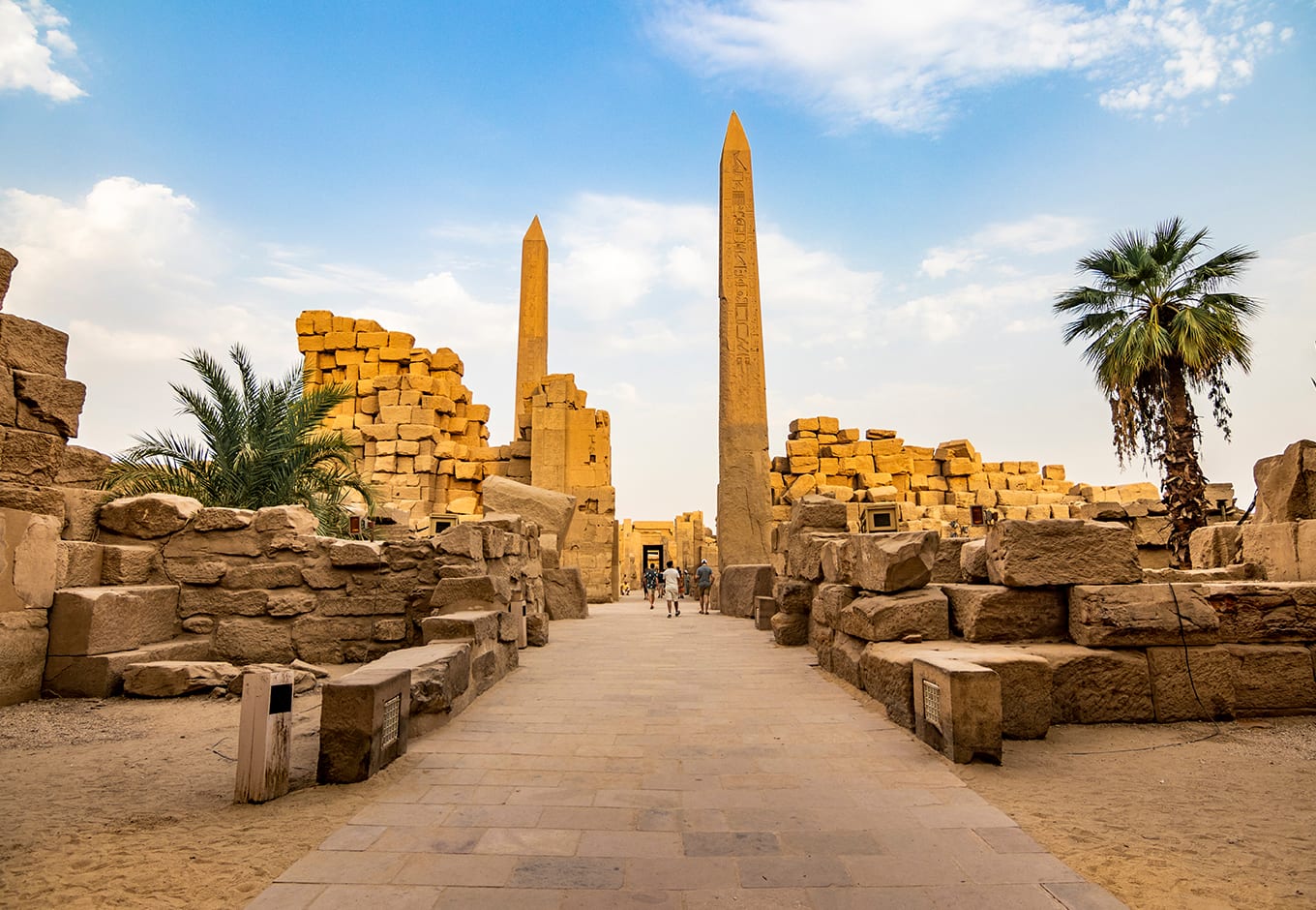
Egypt
For those seeking a country that has it all – great beaches along the Red Sea, developed tourism infrastructure, and lots of history and art museums to attend, Egypt is a place to go.
You can first go scuba diving in the Red Sea, then go inside the pyramids in Dahshur, cruise the Nile river, learn about the ancient Egyptian society in the Egyptian Museum, and after exploring the beautiful Old City of Cairo, go and visit Alexandria.
Take a step off the beaten tourist path in Cairo and hop in a bus to explore the City of the Dead, one of the world’s largest necropolises dating back to fifteenth century, now flocked with the city’s poor, or visit the Ramses Wissa Wassef Art Centre where weavers create huge tapestries. Round up your off-beat path by visiting the Islamic quarter of Cairo, where the oldest mosque in Egypt – Ibn Tulun Mosque – is located. For musical experiences, visit the Al-Ghuri Mosque, where Dervish dancers spin themselves into a trance on Wednesday and Saturday nights.
For beach bums, go to Sharm El-Sheikh and Ain Sokhna, the main holiday resorts, or escape the crowds in smaller coastal towns of Dahab and Nuweiba, to refresh yourself from the bustling Cairo neighbourhoods and the hot desert climate. If you happen to visit Egypt in winter, Marsa Alam, Kosseirr and Sharm el-Sheikh also have the warmest temperatures of all cities in Egypt.
To experience the traditional Abu Simbel Sun Festival on the spot, opt for visiting Egypt in October or February when the festival takes place at the spectacular temple of Ramses II. During the festival, the central chamber of the temple is illuminated by the sun, with Ra (the sun god) and Amun (the king of gods). This event has been taking place for over 3,200 years.
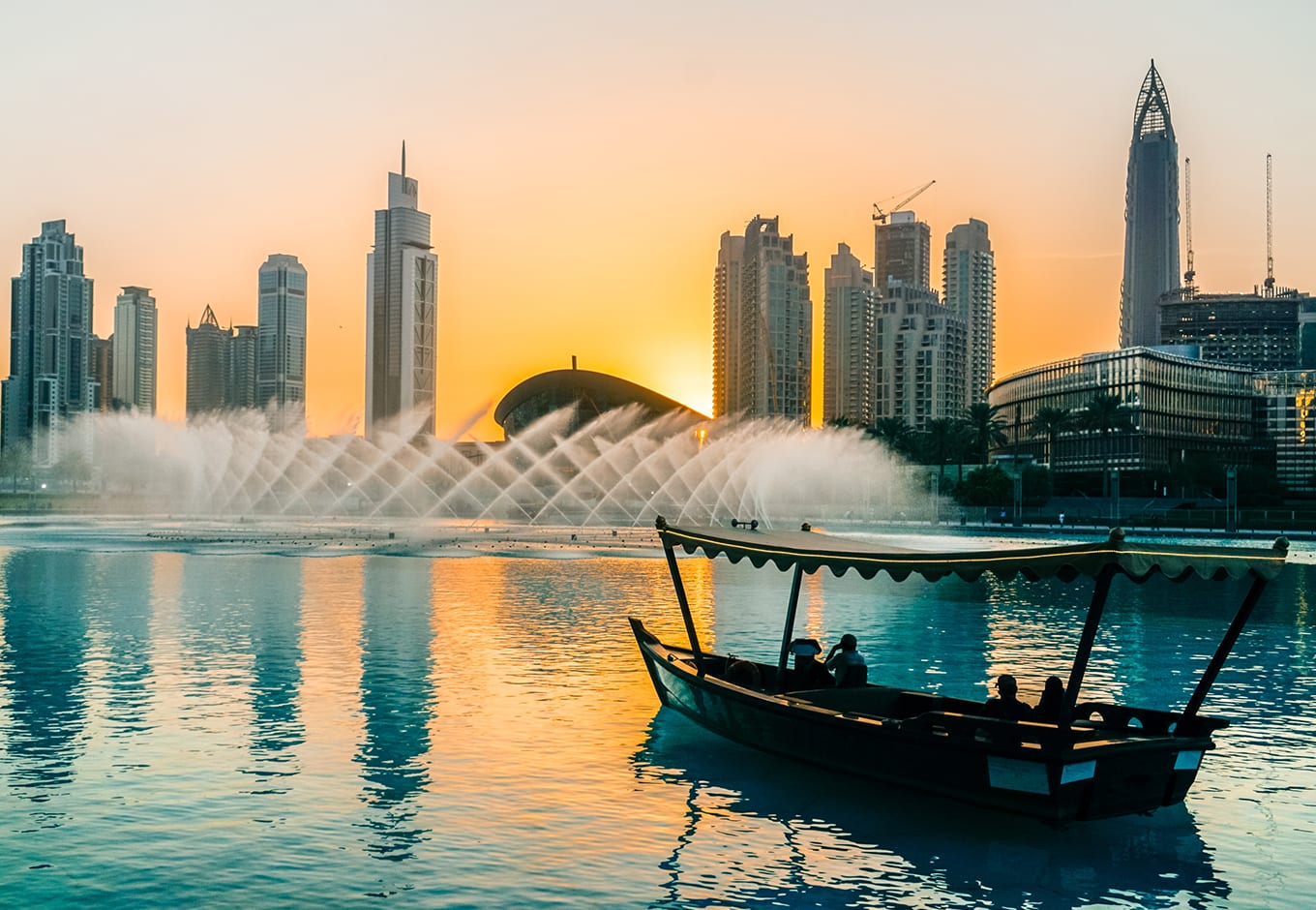
United Arab Emirates
Apart from the tallest building in the world, Burj Khalifa, the United Arab Emirates is famous for its own instagrammable Louvre in Abu Dhabi, great mosques, luxurious lifestyle, and famous street food and dates. And you can even ski there!
When planning your itinerary to the UAE, see the best things to do in Dubai, but there are so many more things to do, such as visiting the family-friendly Dubai Miracle Garden where landscaping is on a whole different level considering the desert conditions. Just an hour’s drive away, you can visit Hatta with the splendid views of turquoise waters resting between the massive desert mountains where you can hike, bike, and camp under the stars.
To experience the UAE traditional Bedouin culture the best, plan your itinerary around Al Dhafra, one of the world’s biggest celebrations of nomadic desert cultures, where a range of Emirati traditions, handicrafts, and music are showcased. On top of all, compare your judgment of that of others at Mazayna, the camel beauty pageant with the prize of $15million USD.
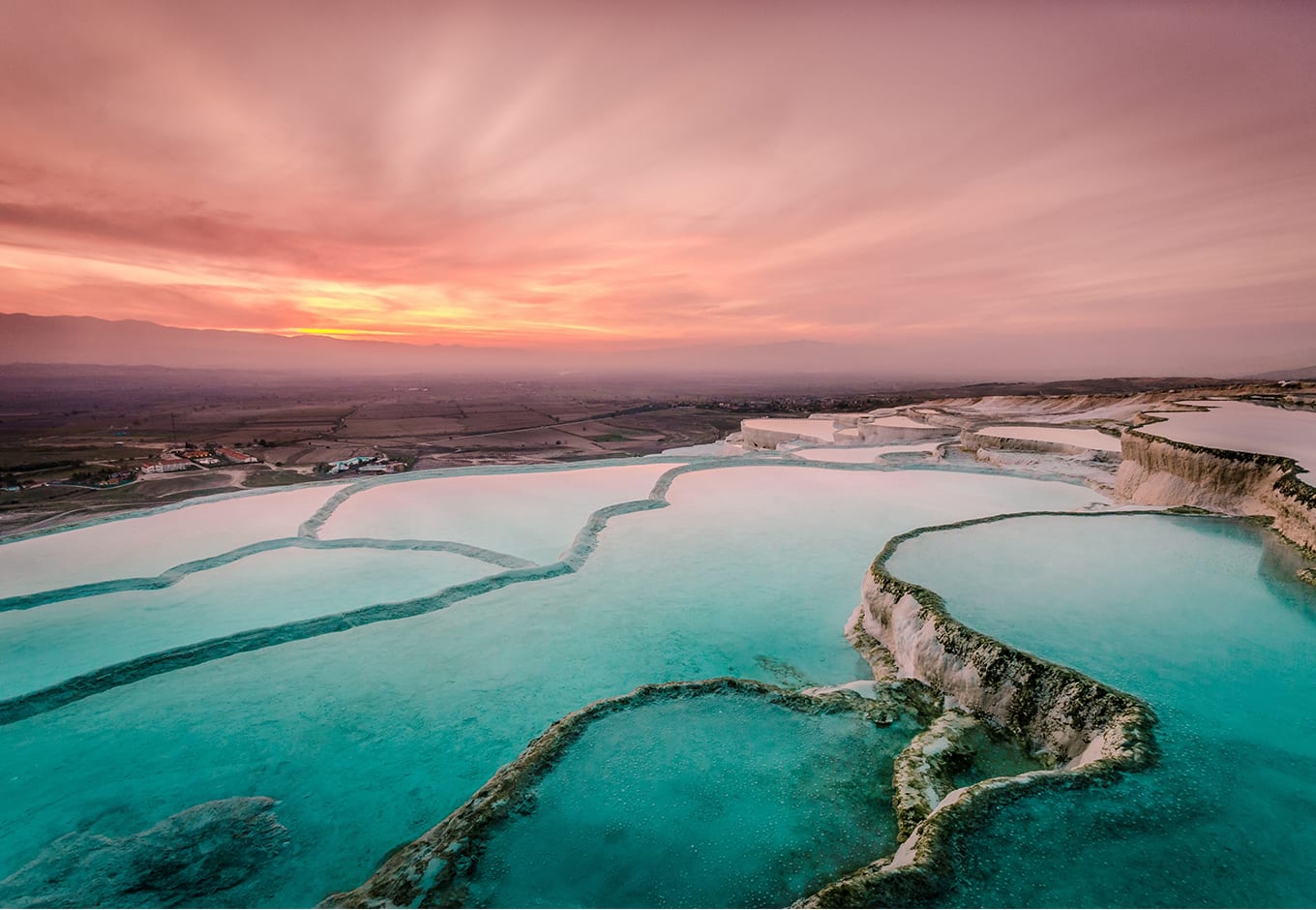
Turkey
Turkey has it all. From ancient mountains and authentic, centuries-untouched culture in the very East, to the sun-soaked Mediterranean in the Western South, and Anatolia steppe in the center, there are things to do for anyone. From visiting some of the most beautiful buildings of the world, as Aya Sofya (Hagia Sophia) in Istanbul, to wandering around the dreamy Cappadocia, or visiting the natural wonders of pure travertine terraces of Pamukkale, to cruising the Mediterranean and stopping at the sun-dazzled Antalya, Turkey makes a great vacation or long-term travel destination for those who wish to experience the mix of European and Middle Eastern influences.
When planning your itinerary to Turkey, even two weeks can be too short. Starting your way from Cappadocia, full of Instagram-able rooftops to watch the sunset sky full of hot air balloons over the Rose Valley, and discovering the underground cities, open-air museums, continue to the ancient Greek city of Ephesus, going your way through Fethiye and Pamukkale, and close your trip with Istanbul. To balance the touristy art museums with more sensual and special experiences, visit a public Turkish bath, camp in the mountains, or soak in the thermal pools. If you do not travel with family or a large group of friends, going on a train ride might be a good idea – check the Eastern Express departing from Ankara, or the otherworldly Karabuk-Zonguldak through lush forests, with a good chance to spot many rare wild animals. Whilst on the go, enjoy the street food – take a simit for breakfast on the go, and fill up with lahmacun, a thin dough topped with a meat-onion-pepper mixture with a glass of cold ayran.
The best time to visit Turkey is in spring, as the weather is moderate, and days are long throughout the country. While being a high-season for Istanbul and Cappadocia, it is the off-season for Aegean and Mediterranean beaches, so you may balance out the budget and tourist crowds by visiting both.
The post The Ultimate Middle East Travel Guide first appeared on CuddlyNest Travel Blog.
















